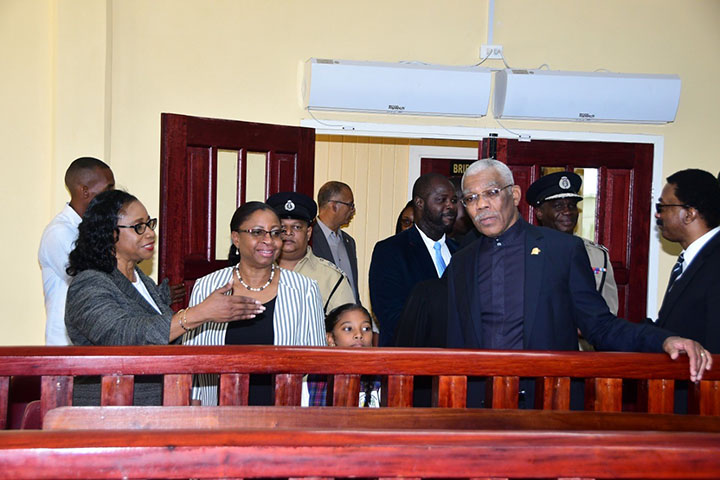Access to justice for residents of East Bank Demerara (EBD) has been broadened with the opening of the $143.5 million Diamond/Golden Grove Magistrates’ Court.
Located at 608 Golden Grove, Section C, Block Y, EBD, residents will be able to use this court for summary matters, while the Providence Magistrates’ Court will be used specifically for traffic offences.
In fact, the court, which houses two court rooms equipped with video conferencing, and recording technology for the taking of evidence, and is staffed by two full-time magistrates, was scheduled to have matters come up before Magistrate Rhondell Weaver at 1 pm yesterday just a few minutes after the opening ceremony ended. A young attorney-at-law, Samuel Glasgow, speaking to this reporter just before the opening ceremony began, shared that he already has three matters fixed at that court.
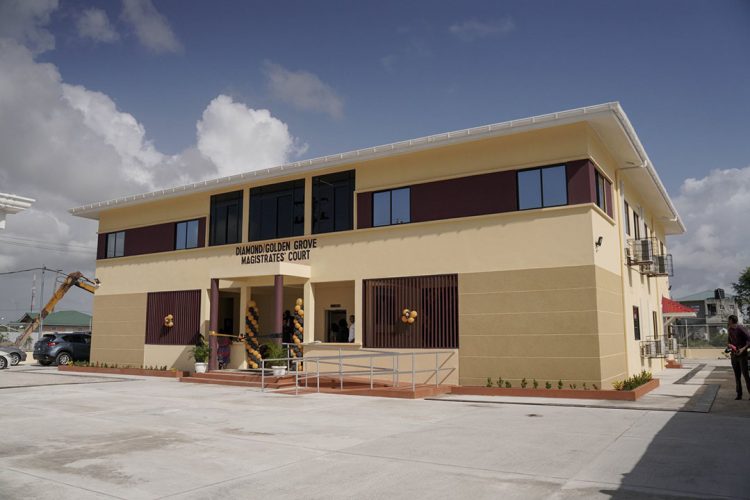
The ceremony at which the court was unveiled was attended by government and judiciary dignitaries, including President David Granger; Attorney General and Minister of Legal Affairs, Basil Williams SC; Chancellor (ag) of the Judiciary, Justice Yonette Cummings-Edwards; Chief Justice (ag) Roxane George SC; President of the Bar Council of the Guyana Bar Association, Teni Housty and former Chancellor of the Judiciary Carl Singh.
Housty, during his address, lauded the construction of the new court, and acknowledged that it would allow increased access, to justice, and as a consequence, equality before the law. He reminded persons, however, that there are other barriers to justice, such as poverty, which can restrict meaningful access to justice, and which also needed to be addressed.
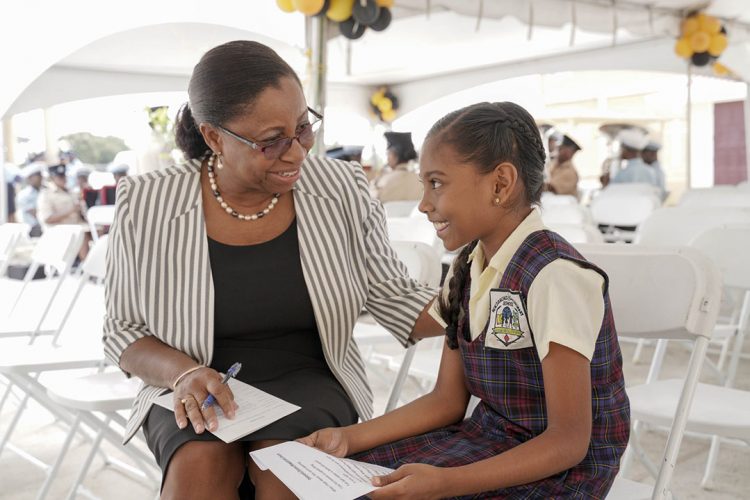
Meanwhile, Williams, reminded those gathered of the important role which magistrates’ courts play, including serving as the locale for preliminary inquiries, and summary consideration of some offences.
Magisterial districts
Chancellor Cummings-Edwards pointed out that magisterial districts were demarcated in Guyana since 1952, but that since this time, many communities have sprung up along the EBD. These communities include Providence, Farm, Mocha, Eccles, Herstelling, and Prospect. The Chancellor (ag) said these new communities saw increasing populations along the coast, and an increased need for access to courts. Granger said that the estimated population of the EBD is around 70, 000.
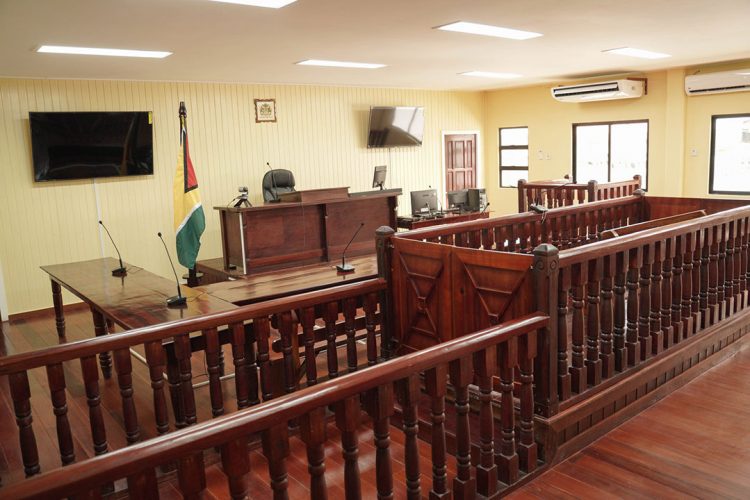
Adding context to the vastness of Guyana, and the attending difficulty in presenting judicial, and other services, President Granger noted that “the Barima-Waini Region is larger than Kuwait; Pomeroon-Supenaam is larger than Trinidad and Tobago; Essequibo Islands-West Demerara is larger than Mauritius; Demerara-Mahaica is larger than Singapore; Mahaica-Berbice is larger than Cape Verde; East Corentyne-Berbice is larger than Belgium; Cuyuni-Mazaruni is larger than the Netherlands; the Potaro-Siparuni is larger than Fiji; the Rupununi (Upper Takutu-Upper Essequibo) is larger than Costa Rica and Upper Demerara-Berbice is larger than The Bahamas.”
Granger, who is performing the functions of a caretaker President, noted that “every citizen, everywhere, is entitled to the protection of the law” adding that “he or she can benefit from this protection only if the services of the country’s legal system are accessible”.
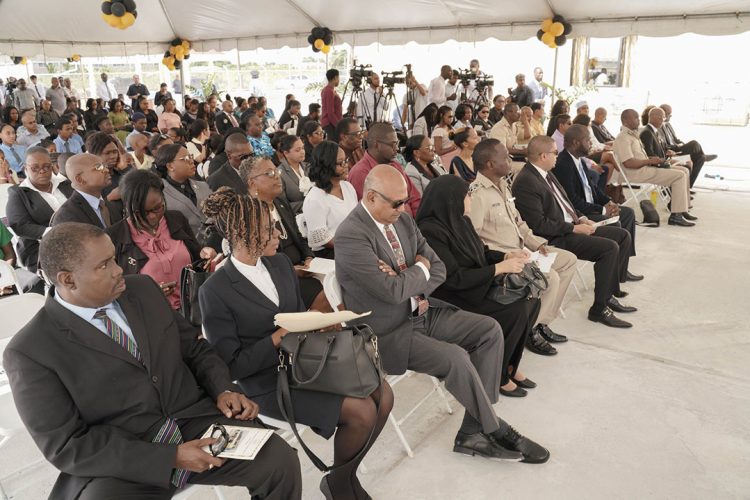
As such, Granger charged, if the people cannot get to the court, the court must go to the people.
Chancellor (ag) Cummings-Edwards told those gathered that the volume of people seeking access to justice on the EBD placed a great strain on the Providence Magistrate’s Court, which, having become part of the judicial district in May 1902, was bursting at the seams with the amount of matters being heard daily.
As interim measures, the Chancellor said that the judiciary constructed a benab at the Providence Magistrate’s court which was used to house witnesses. She said, however, that this facility, and the existing courtroom were still bursting at the seams. As such, a police living quarters, and an annex, respectively, were used as additional courtrooms. The Chancellor said that even with these provisions, and the stewardship of senior magistrates working until 6 pm most days, the load continued to increase, as the Providence Magistrates’ court remains one of Guyana’s busiest. Furthermore, in an effort to paint a vivid picture of the amount of work before these courts, the Chancellor shared that 90 percent of all criminal matters are processed in Guyana’s magistrates’ courts.
With the construction of the court in Golden Grove, the Chancellor (ag) said one of the police facilities at Providence can be returned to them to be used as initially intended. She also said that Providence will now become a specialised court, dealing only with traffic offences, while the Golden Grove Magistrates’ court will deal with all other summary matters.
Chief Justice (ag) George explained that the land on which the court sits was procured through the efforts of former Chancellor (ag) Singh, and that the completion of the project was nurtured and seen to fruition by Chancellor (ag) Cummings-Edwards and her team in the Supreme Court.
Chancellor (ag) Cummings-Edwards said that the judiciary will continue to improve access to justice, and toward that end, announced that courts will soon be constructed in Bartica, Essequibo River, and Mahdia in Region 8. She also explained that given that Guyana’s magisterial boundaries were demarcated so long ago, and in light of developments which have taken place since, the Supreme Court has engaged in discussions with stakeholders, including the Guyana Police Force, the Director of Public Prosecutions, and the Guyana Lands and Surveys Commission about carving out another magisterial district which would encapsulate Eccles to Timehri, riverain areas, and parts of the Linden Highway. This area, she said can likely be called the Lower Demerara magisterial district.
Access to the disabled
The Chancellor (ag) said that the court will also allow access to persons who are confined to wheelchairs, as it is fitted with a wheelchair ramp, an elevator, washrooms, and a parking lot specially designed for persons using wheelchairs.
Chancellor (ag) Cummings-Edwards also shared that the court has a domestic violence unit, and a holding facility for prisoners who are required to appear before that court.
